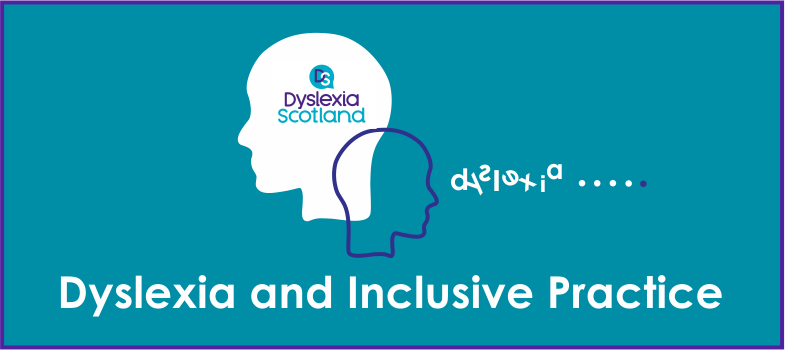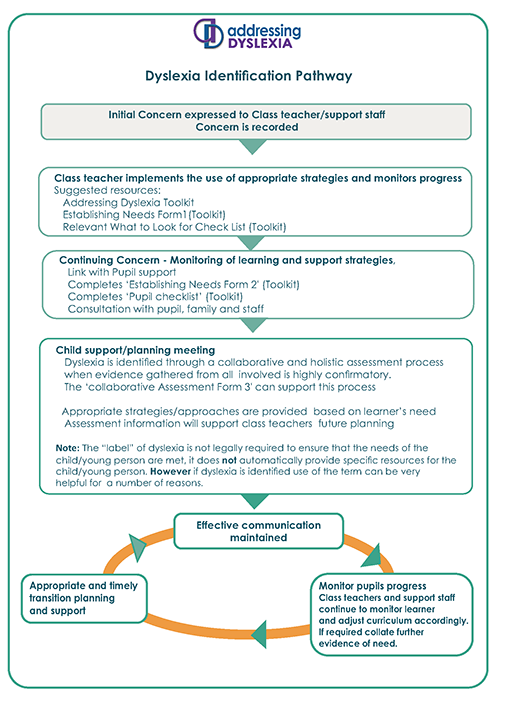4.1. How is dyslexia identified?
Dyslexia and assessment
Within the inclusive ‘needs led’ Scottish educational context - the ‘label’ of dyslexia is not in itself required in order for resources or support to be made available for learners. However, it is equally important to understand that the label of dyslexia can be very valuable to the learner and their family in terms of the learner’s sense of self and gaining understanding from others.
The identification of dyslexia in local authority schools across Scotland takes place within individual authorities’ staged levels of intervention processes. Section 1 of this module provides an overview of the Staged Levels of Intervention. Information on this process in each local authority should be publicly available on their website.
The assessment of dyslexia in children and young people should be:
- A process rather than an end product. The information provided during the assessment process should support the learner’s next steps for learning.
- A holistic and
collaborative process that takes place over a period of time, drawing on a range of observational and assessment methods. This approach reflects the ‘identification pathway’ within the Addressing Dyslexia Toolkit shown below.
The identification process for dyslexia can include the following:
Observations –nursery/school and information from homeConsultation with the pupil, staff and family- Examples of
free writing Reading comprehension levels Chronological reading and spelling – (if appropriate)- Assessment of
phonological awareness andprocessing skills - Use of appropriate assessments – motor skills, organisation, visual perceptions.
A single standardised assessment or a screener on its own is not considered an appropriate process to identify dyslexia. While the information can be helpful it must be recognised that it reflects a snapshot in time and that it cannot provide the in-depth analysis and quality of a learner centred holistic assessment which involves school staff, partners, the family and importantly the learner themselves. Assessment acknowledges that children and young people develop as a result of an interaction between themselves and their environment.
Activity 10
Watch the short animation on the “Dyslexia Identification Pathway”.
Below are some of the files available for you to download. More resources are available on the Toolkit’s Forms and Templates [Tip: hold Ctrl and click a link to open it in a new tab. (Hide tip)] page
Identification pathway for dyslexia
What to look for check-list: First and Second CfE level. (Other checklists are available from Early to Senior levels).
Scottish Dyslexia Planning Tool
Activity 11 Reflective Log
Do you know where to locate your local authority's information on identifying dyslexia?
If not, find the policy through searching online or by talking to colleagues.
Record your findings in the Reflective Log.
4. Support, assessment and planning


